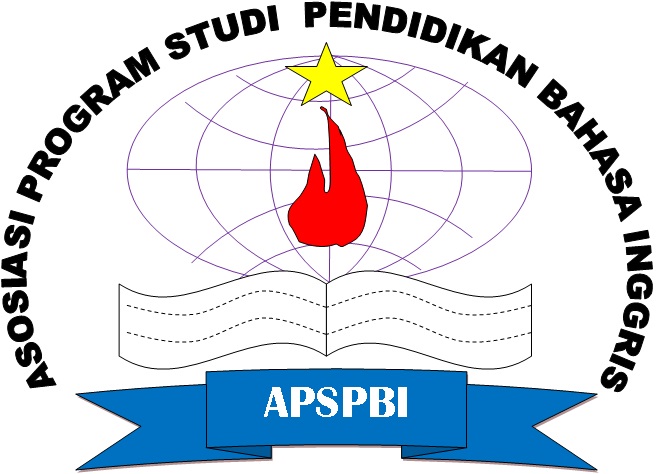Students’ perceptions of adopting songs for English online learning in Indonesian tertiary education
DOI:
https://doi.org/10.28918/erudita.v1i1.4457Keywords:
English online learning, Songs, Students’ perceptionAbstract
The pandemic situation in the last two years has forced us to move almost all activities online, including our teaching and learning activities. This creates challenges for teachers to discover suitable techniques or media to motivate students to keep being active in online class interaction. One of the possible media that can be used is songs; a media which is already popular among the youths. This paper presented a data survey towards 107 female students aged 19-20 years old from one of the midwifery academies situated in Central Java, Indonesia. This study used an online questionnaire form. There were 18 items in the questionnaire and the data consisted of demographic data and students’ perception towards the use of songs for improving their skills in English. The data were presented in the percentage data and analyzed using descriptive explanation. The result showed that the students’ perception on songs as media for English online learning achieved positive perception on all items. Referring to this finding, teachers can consider using songs for English online learning in order to create an attractive and interactive online learning process.
References
Adedoyin, O. B., & Soykan, E. (2020). Covid-19 pandemic and online learning: The challenges and opportunities. Interactive Learning Environments, 28(8), 1-13. https://doi.org/10.1080/10494820.2020.1813180
Armstrong, D. A. (2011). Students’ perceptions of online learning and instructional tools: A qualitative study of undergraduate students use of online tools. The Turkish Online Journal of Educational Technology, 10(3). https://files.eric.ed.gov/fulltext/EJ944973.pdf
Caicedo, P. E., & Lojano, V. S. (2013). Songs and games as a tool to foster English learning to children at the fifth level of basic education: Class validation at josé rafael arizaga elementary school [Master’s thesis, Universidad de Cuenca, Ecuador]. Repositorios Latinoamericanos. https://repositorioslatinoamericanos.uchile.cl/handle/2250/1112486
Vinyets, N. B. (2013). Using songs in primary education: Advantages and challenges [Bachelor’s thesis, Universitat de Vic, Spain]. http://repositori.uvic.cat/bitstream/handle/10854/2514/trealu_a2013_bach_nuria _using_songs.pdf?sequence=1
Hadian, M. (2015). The use of song lyrics in teaching listening: A case study of junior high school grade 8 in Bandung. Journal of English and Education, 3(1). 96-105. https://ejournal.upi.edu/index.php/L-E/article/view/4613
Harmer, J. (2009). The practice of language teaching (4th ed.). Pearson Longman.
Hodges, C., Moore, S., Lockee, B., Trust, T., & Bond, A. (2020, March 27). The difference between emergency remote teaching and online learning. https://er.educause.edu/articles/2020/3/the-difference-between-emergency-remote-teaching-and-online-learning
Kusnierek, A. (2016). The role of music and songs in teaching vocabularies to students. World Scientific News, 43(1), 1-55. http://www.worldscientificnews.com/wp-content/uploads/2015/10/WSN-431-2016-1-55.pdf
Latief, M. A. (2011). Research methods on language learning: An introduction. Malang University Press.
Lems, K. (2018). New ideas for teaching English using songs and music. English Teaching Forum. https://eric.ed.gov/?id=EJ1181080
Lestary, N. L. G. W. (2019). The use of songs to improve students’ listening comprehension ability. YavanaBhasha: Journal of English Language Education, 2(2), 34-45. http://dx.doi.org/10.25078/yb.v2i2.1024
Means, B., Toyama, Y., Murphy, R., Bakia, M., & Jones, K. (2009). Evaluation of evidence-based practices in online learning: A meta-analysis and review of online learning studies. (Annual Report), U.S. Department of Education Office of Planning, Evaluation, and Policy Development Policy and Program Studies Service. https://www2.ed.gov/rschstat/eval/tech/evidence-based-practices/finalreport.pdf
Meylani, R., Bitter, G., & Legacy, J. (2015). Desirable characteristics of an ideal online Learning environment. Journal of Educational and Social Research, 5(1), 203-216. http://dx.doi.org/10.5901/jesr.2015.v5n1p203
Ningsih, N. (2019). The effect of song in teaching English. ELTIES (English Language Teaching for EFL Learners Journal, 1(1), 1-12. https://doi.org/10.24252/elties.v1i1.7413
Orlova, N. F. (2003). Helping prospective EFL teachers: Learn how to use songs in teaching conversation classes. The Internet TESL Journal, IX(3). http://iteslj.org/2003
Putri, M. C. (2018). Using English songs in improving listening skill. Khatulistiwa: Jurnal Pendidikan dan Pembelajaran, 7(5), 17-30. https://jurnal.untan.ac.id/index.php/jpdpb/article/viewFile/25716/75676576793
Ramdhan, D. F., Nasihudin, Rohaniawati, D., & Pratiwi, I. M. (2020). Tipologi belajar mahasiswa pada pembelajaran daring [Conference session]. UIN Sunan Gunung Djati, Indonesia. http://digilib.uinsgd.ac.id/30594/
Sanchez, A. A. C. (2017). The use of songs in the English teaching-learning process of the 6th level basic education students at “Frances” private educational institution in Esmeraldas [Bachelor’s thesis, Pontifical Catholic University of Ecuador]. PUCESE. https://repositorio.pucese.edu.ec/bitstream/123456789/906/1
Srirejeki, G. K. N. L. (2019). Increasing students’ listening skills through song and authentic video. YavanaBhasha: Journal of English Language Education, 2(2), 64-69. http://dx.doi.org/10.25078/yb.v2i2.1045
Winasih, A. W. (2018). Students’ perception on using songs to improve students’ motivation in learning English at the tenth grade of SMK Muhammadiyah 1 Surakarta in 2017/2018 Academic Year [Bachelor’s thesis, Universitas Muhammadiyah Surakarta, Indonesia]. UMS Repository. http://eprints.ums.ac.id/62753/1/NASPUB.pdf
Downloads
Published
How to Cite
Issue
Section
License
Copyright (c) 2021 Eka Wulandari, Yuyun Putri Mandasari

This work is licensed under a Creative Commons Attribution-ShareAlike 4.0 International License.















